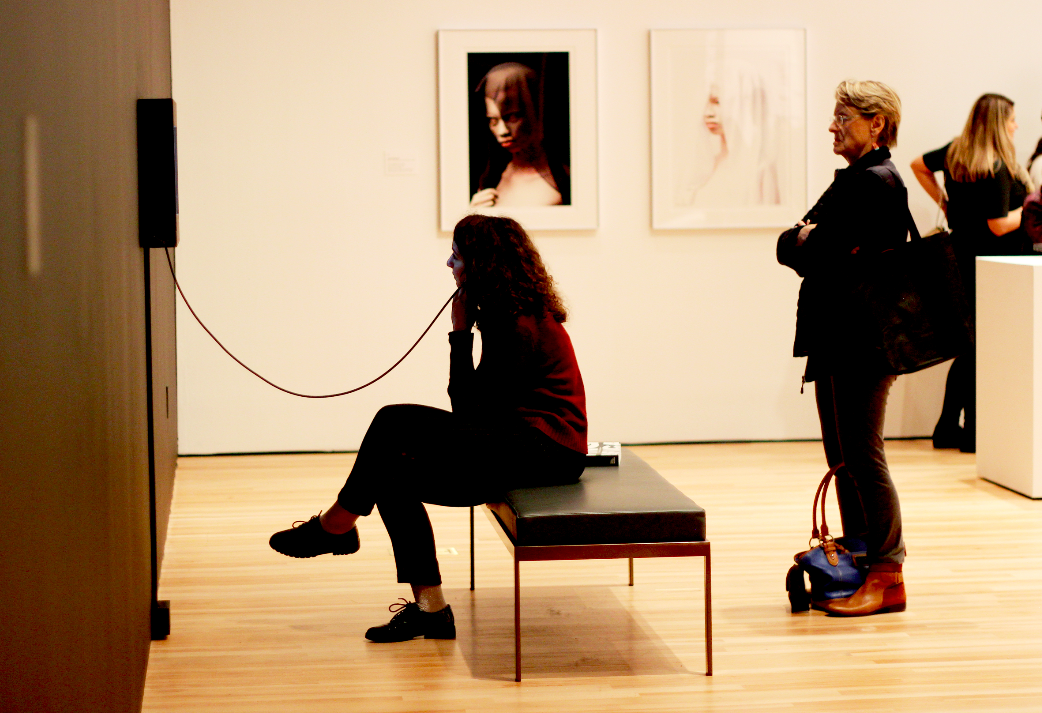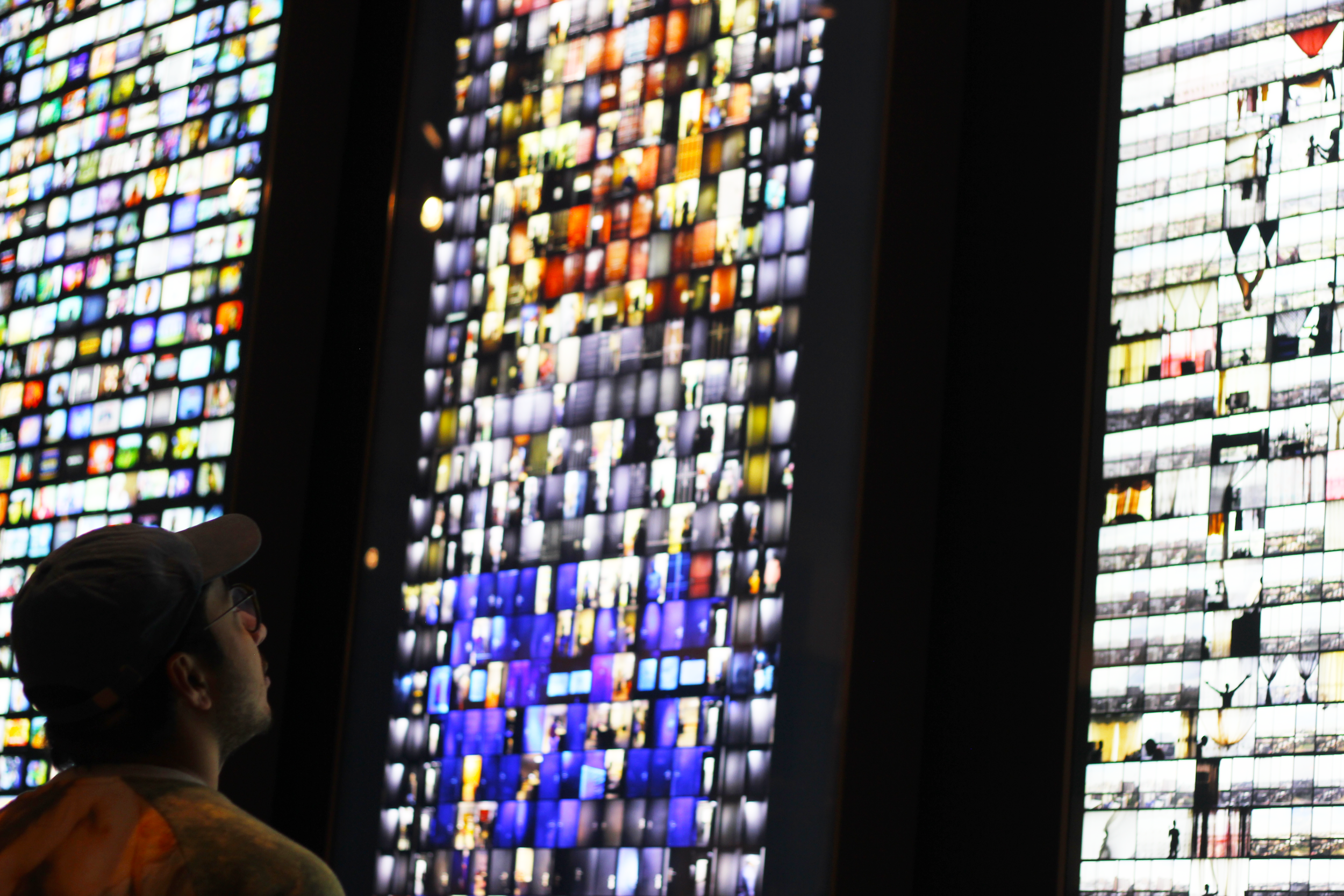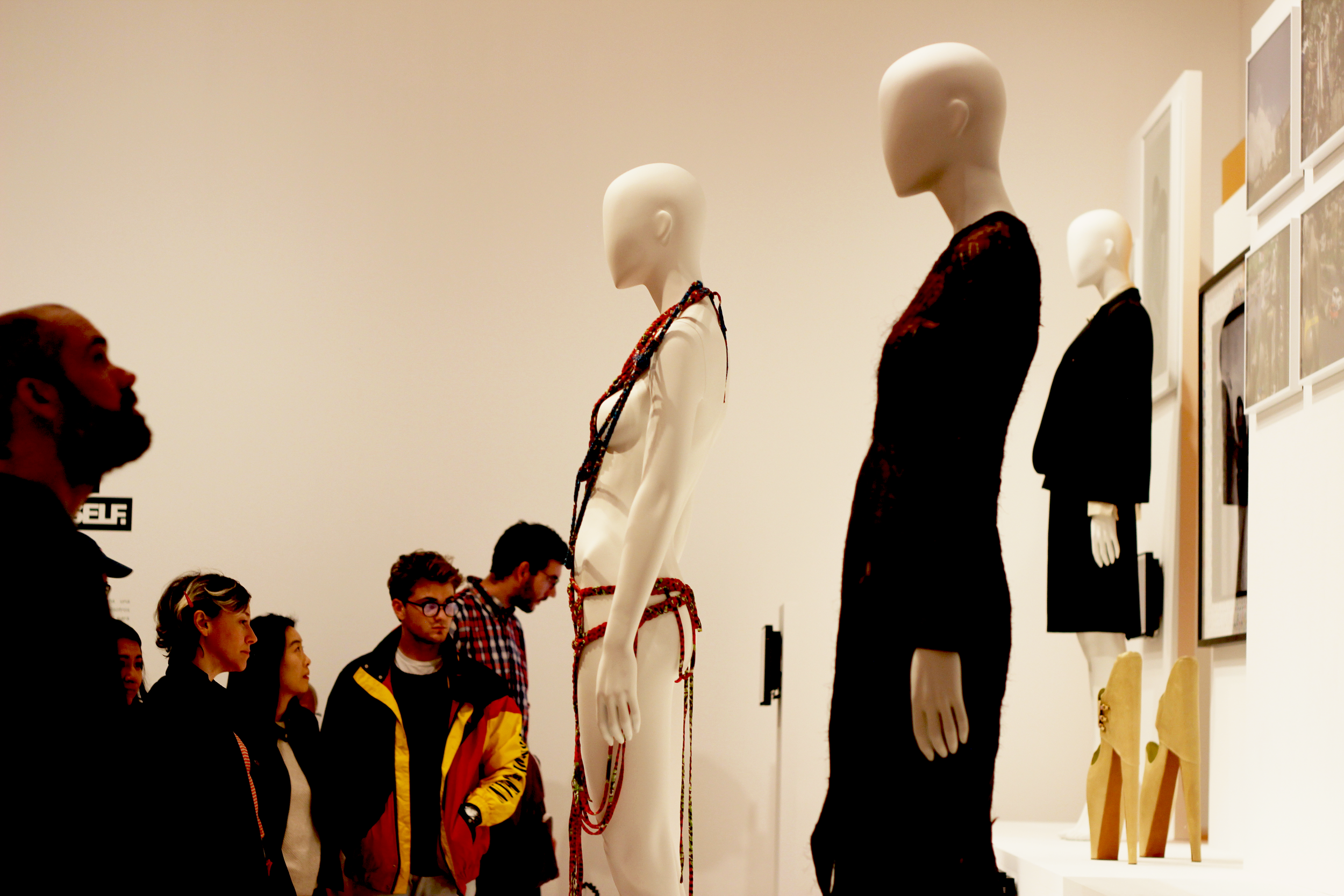Flooding the room with color, each piece is unique and diverse.
In conjunction with the “Making Africa: A Continent of Contemporary Design” exhibit, the Blanton Museum of Art hosted a panel comprised of artists whose work are featured in the current showcase and artists whose work mirror the themes presented in the exhibition.
Story by Alyssa Hiarker
Photos by Kiana Fernandez
“Making Africa,” an exhibit currently being showcased in the Blanton Museum of Art, focuses on raising questions about perceptions of Africa and destigmatizing the mainstream ideas regarding the continent. Nosarieme Garrick, the creator of the “My Africa Is” documentary series featured in the exhibition, aimed to address the stories being told. “There’s various realities on the continent, but it seems like only the negatives ones are the ones represented,” Garrick says. “I moved back to Nigeria and met all of these young, amazing, inspiring change makers and I felt like, ‘Why not share their stories? And more than just write about it, why not show these stories visually’?”
Garrick’s decision to define herself as a storyteller is echoed by Walé Oyéjidé, creator of the design brand “Ikiré Jones.” “I call myself a designer, an artist, I think these are all very big important words that can be intimidating to people,” Oyéjidé says. “I think for the most part what I do, what I tend to do, is summed up by being a storyteller.”
Visitors of the exhibit interact and engage with the pieces on display.
Along with expanding the perceptions of Africa, the “Making Africa” exhibit and the art and artists showcased focus on seeking representation for a genre of art that has historically been underrepresented. “It really is a time capsule of 2012-2014 where there was explosion of art from Africa that was trying to find a place because of the lack of representation,” Garrick says.
Oyéjidé’s fashion, which is featured in the “Making Africa” exhibit and in the movie “Black Panther,” is inspired by the quest to create representation for those who look like him in media and art. “I happen to be a huge fan of classic European fine arts, the things that we see as the apex of beauty are also the things that I aspire towards, but it’s kind of me just kicking in the door and injecting people who look like me into the same shapes and same canvases,” Oyéjidé says.
Mukhtara Yusuf, a visual artist, scholar and designer, utilizes the combination of these three identities to create designs that reflect bigger ideas and questions. “As a scholar, I write and theorize about the politics behind design and how to make it better,” Yusuf says. “As a visual artist, I create work that captures the complex and largely intangible structures and feelings we live with and within. As a designer, I try to make those things more tangible and create solutions to the problems that they pose.”
Oyéjidé touches on how he first received a law degree before transitioning into the world of design where his true passions lie. “There are things you can do and there are things that you exist to do.”
The artwork presents itself in a welcoming light, encouraging crowds to take in the beauty and intricacy of African design.
Moyo Okediji, the panel moderator and art historian, continued along the same idea, talking about how many artists appease their parents with doctorates or law degrees before entering the art world. “My generation really is one that has created enormous problems for this generation,” Okediji says. “One of the things you will notice when many of them talk is ‘I started out as a lawyer or as an engineer or as a doctor when really what I wanted to be was an artist’, but first they would have to satisfy us first before they even started to talk about who they are or what they like to do.”
Looking to the future, the artists commented on the amount of stories still left untold about Africa and their drive to continue to work to tell those stories via art. “There are so many experiences we have left to explore,” Garrick says.














































